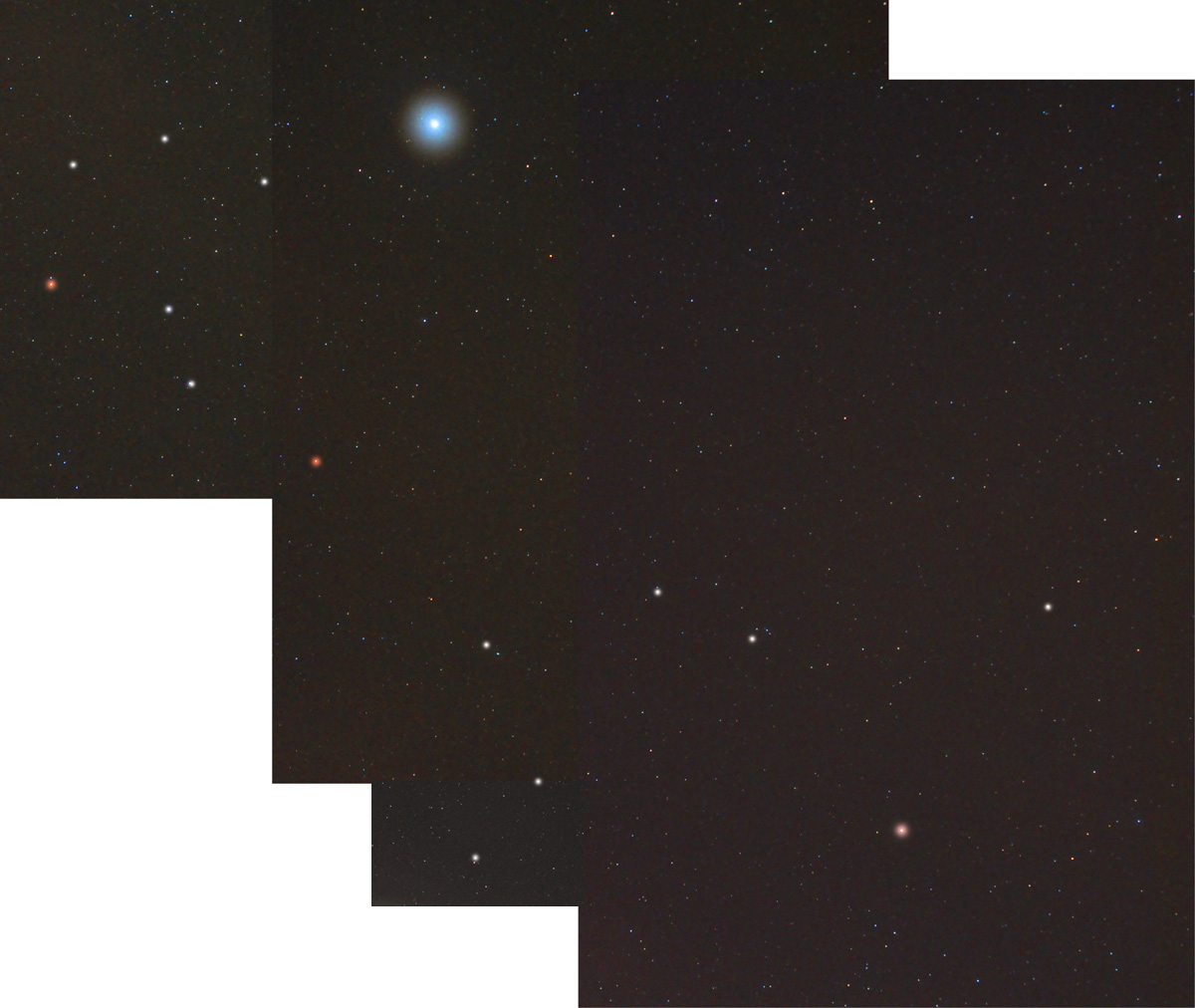Cetus
Cetus, The Whale, is one of those constellations that can easily be made out to look just like its name sake. Despite being moderately faint and in the southern sky which makes it difficult to view from most of the U.S., Cetus is well known for hosting one of the most famous and best loved variable stars in the sky, Mira. This star fluctuates between 3rd magnitude and 10th magnitude, a brightness difference of more than 600 times, (the maximum magnitude can occasionally reach 2nd magnitude, making the brightness difference as much as 1700 times) and most of the time, it is invisible to the naked eye. Mira is a binary system believed to lie about 400 light years from Earth, containing a red giant, some 350 times the size of our sun, and a white dwarf star thar orbits the primary every 400 years. Mira is the prime example of a class of variables that result from surface oscillations that cause the huge change in brightness over a period of from about 80 to 1000 days; in Mira's case, the variation occurs every 332 days. Also, Mira is losing mass; it is believed to be caused by an interaction between the outer parts of the star and a cloud of interstellar gas through which the star is moving at a high rate of speed. Some of this mass is falling upon its companion, which is currently surrounded by an accretion disk.
Menkar is also a red giant star, with about 3 times the mass of Sol, 42 times its diameter, 1800 times its luminosity, and lying about 249 light years distant. Menkar seem to be near the end of its life cycle, either having run out of helium in its core or nearly so. Baten Kaitos is a type K star about 260 light years from Earth and Deneb Kaitos is a large type K star, some 3 times the sun's mass, 17 times its diameter, 145 times its luminosity, and lying about 96 light years away. Tau Ceti is a very ordinary star but is famous for being one of our close neighbors, lying at a distance of only 12 light years, and being very similiar to our sun in spectral type, size, brightness, and age. It is also known to be surrounded by a ring of dust.
The very bright object at the top in this photo is Jupiter.
Cetus contains numerous small galaxies but no other deep space objects of note. This constellation is best viewed in late fall and early winter.
 |